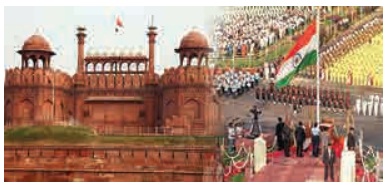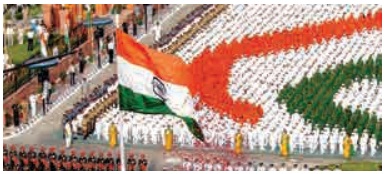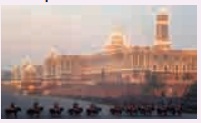National Symbols | Term 2 Unit 1 | Civics | 6th Social Science - National Holidays | 6th Social Science : Civics : Term 2 Unit 1 : National Symbols
Chapter: 6th Social Science : Civics : Term 2 Unit 1 : National Symbols
National Holidays
National Calender
During the reign of Emperor Kanishka he
began following a new calendar in the year 78 CE/AD. The year begins from the
spring equinox which falls on March 22nd. During a leap year, it begins on
March 21st. Our country follows this calendar. The famous astronomer Meghnad
Saha headed the Calendar Reformation Committee on 22nd March 1957. It was then
accepted by the committee as our national calendar.
The National symbols help in uniting
the diversified sections of India and to instill patriotism.
National Holidays
Independence Day

Every year, August 15 is celebrated as
the Independence Day to commemorate India’s freedom from British rule. This
auspicious day is also marked as a birth of the world’s biggest democracy,
India.
On the day India gained independence,
Mahakavi Bharathiyar’s poem “Aaduvome Pallu Paduvome” and it was sung over the
AIR (All India Radio) by T.K.Pattammal, a famous singer of Carnatic Music. The
celebration of Independence Day continues every year. The Prime Minister
unfurls the National Flag on the Independence Day at the Red Fort, New Delhi.
Republic Day

On 26th January 1950, India was
declared as a democratic state. Every year this day is commemorated as the
‘Republic Day’. The constitution commenced on 26th January 1950. From August
1947 to 26th January 1950, the Queen of Britain was the honorary head of India.
The day India was declared as a democratic state, the President became the
first citizen of India. On Republic Day, the President of India hoists the
National flag at the Red Fort New Delhi.
On January 29, the third
day of the Republic day, the celebrations are brought to an end with the “Beating
Reteat” ceremony. This is performed
by the bands of Indian Army, Navy and Airforce. The President of India is the
chief guest of this day. Rashtrapati Bhavan will be illuminated at 6pm as a
part of the celebration.

Gandhi Jayanthi

The birthday of Mahatma Gandhi, the
Father of our Nation, was declared one of the National festivals. It falls on
2nd October. In 2007, the United Nations declared October 2nd as the
‘International Day of Non-violence’.
Related Topics